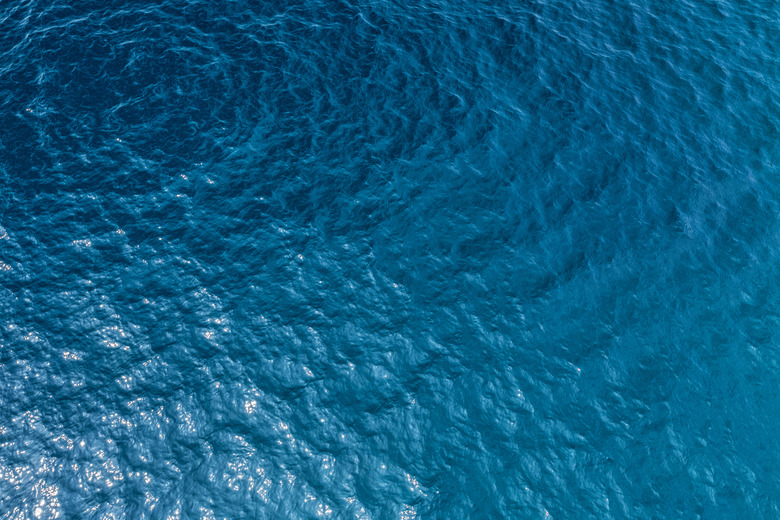Four Biggest Differences Between The Ocean & Fresh Water
Saltwater, which is found in earth's oceans and seas, is quite different from the freshwater contained within lakes, rivers and streams across the globe. Plant and animal species are adapted to live in one type of water or the other, but few can thrive in both. Some species are able to tolerate what is called brackish water, which results when freshwater from a river or stream drains into a saltwater body and lowers the saltwater's salinity.
Salinity
Salinity
Perhaps the biggest difference is in the name itself. Saltwater contains salt, or sodium chloride. Freshwater may contain small amounts of salt, but not enough to be considered saltwater. Ocean water has an average salinity of 3.5 percent. This means that there are 35 grams of salt dissolved in every liter of seawater. The salinity lends itself to the other differences between ocean and freshwater and also poses a challenge for the organisms that thrive in saltwater. It is believed that the salt in ocean water comes from salt leaching out of the ocean floor as well as salt that is carried out of rivers and streams.
Density
Density
Saltwater is denser than freshwater due to the sodium chloride dissolved in it. This means that a specific volume of salt water is heaver than the same volume of freshwater. Warmer salt water is less dense than colder saltwater, which results in the colder water sinking to the ocean floor. While colder water is denser, when water freezes into ice, it becomes less dense and floats on the surface.
Freezing Point
Freezing Point
Both the freezing and boiling points of ocean water differ from freshwater, but only the freezing point is of concern in nature. The average freezing point for ocean water is -2 degrees Celsius, although it can be even lower than that if the salt content is higher or the water is under pressure. The typical freezing point for freshwater is 0 degrees Celsius.
Tonicity
Tonicity
When water with differing concentrations of salt, or any solute, is positioned across a semipermeable membrane, water will flow to the side of the membrane with the higher solute concentration in an attempt to even out the concentration of solutes. When discussing water, tonicity is important for the plant and animal species living within the body of water. Saltwater is hypertonic to the tissues in plants and animals. This means that these organisms lose water to their environment. As a result, they have to constantly drink water and eliminate salt. Conversely, freshwater is hypotonic to the animals and plants. These organisms rarely need to take in water, but must excrete it often as water is absorbed readily in an attempt to even out the salt concentration. This adaptation is known as osmoregulation.
Cite This Article
MLA
Powell, Jack. "Four Biggest Differences Between The Ocean & Fresh Water" sciencing.com, https://www.sciencing.com/four-between-ocean-fresh-water-8519973/. 25 April 2018.
APA
Powell, Jack. (2018, April 25). Four Biggest Differences Between The Ocean & Fresh Water. sciencing.com. Retrieved from https://www.sciencing.com/four-between-ocean-fresh-water-8519973/
Chicago
Powell, Jack. Four Biggest Differences Between The Ocean & Fresh Water last modified March 24, 2022. https://www.sciencing.com/four-between-ocean-fresh-water-8519973/
